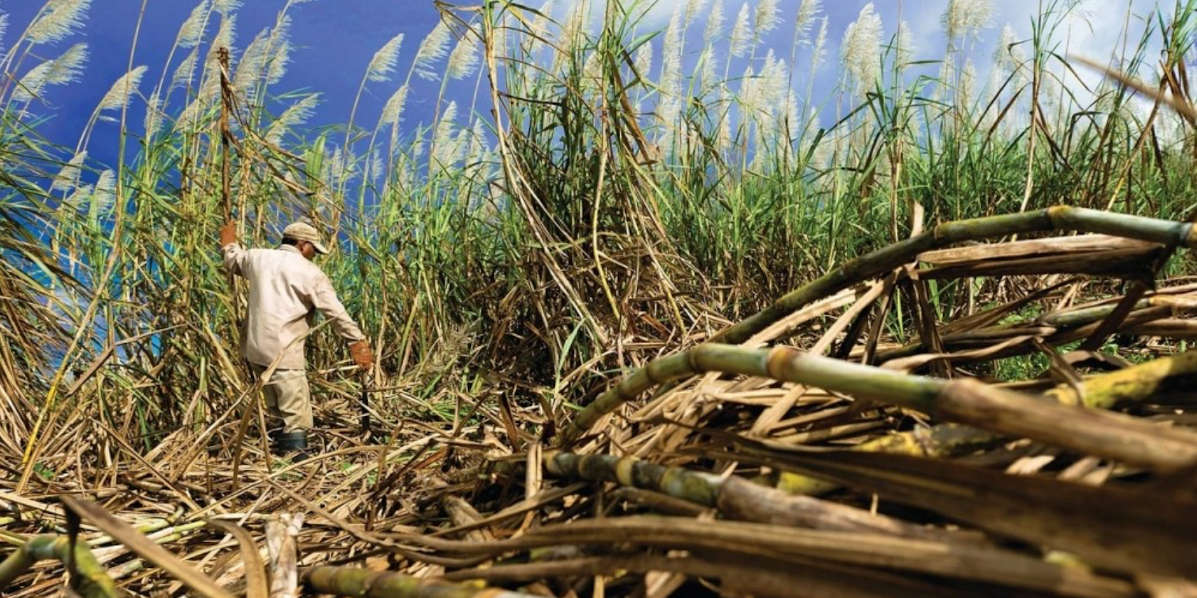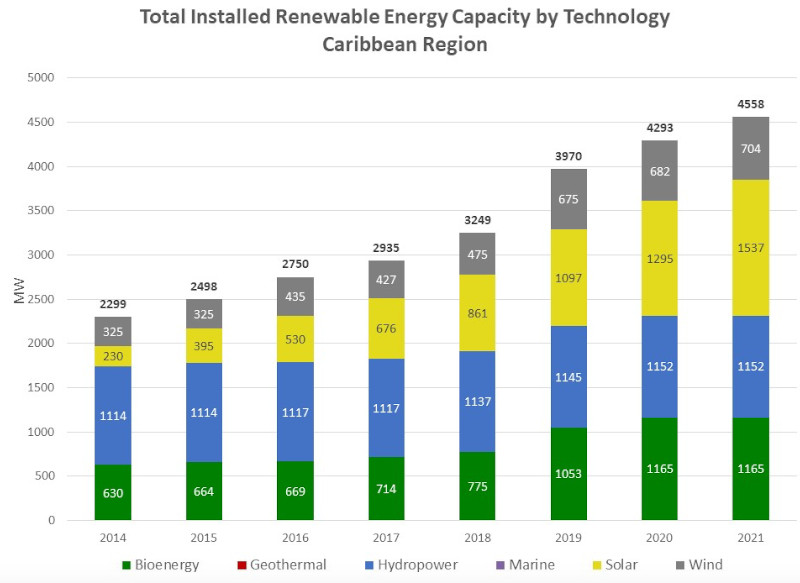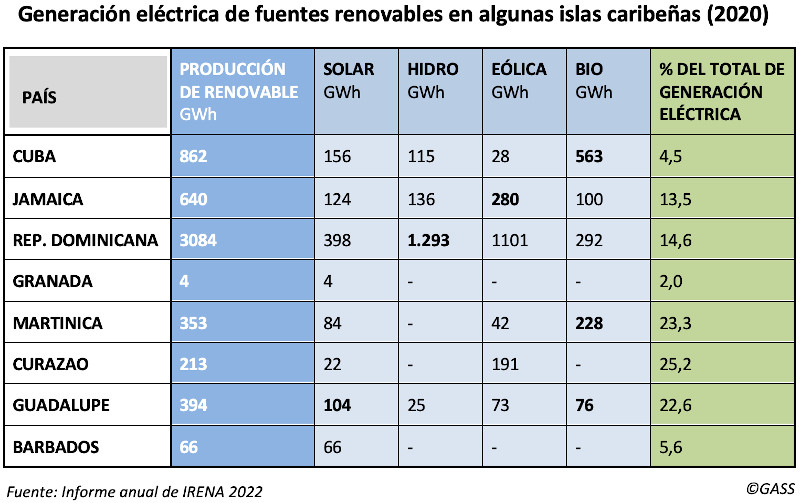In the last decade, installed renewable energy capacity in the Caribbean region has doubled from 2,299 MW in 2014 to 4,558 MW in 2021. In that time, solar energy has grown the most, surpassing more traditional sources, such as hydro and biomass, as of 2020. While waterfall power generation capacity has barely changed (from 1,114 MW in 2014 to 1,152 MW in 2021), installation from biomass has almost doubled (reaching 1,165 MW in 2021); however, the progress has been greater for solar power, increasing almost sevenfold (from 230 MW in 2014 to 1,537 MW in 2021), according to the data of the International Renewable Energy Agency (IRENA).
Among the Antilles, the countries with the largest installed capacity in the field of renewable energy are the Dominican Republic, Cuba and Jamaica. All three have doubled their capacity in the last ten years, but curiously Cuba has not done the same in terms of production. According to agreement with the latest report annual IRENA report, in 2021 the Dominican Republic had an installed capacity of 1,532 MW; Cuba, 1,281 MW; and Jamaica, 254 MW (in 2014 it was 717 MW, 594 MW and 96 MW, respectively). But Cuba did not use these capacities to make a similar leap in terms of production, and in 2020 generated 862 GWh, below what was achieved in the peaks of 2013 and 2016, maintaining in any case a fairly flat evolution throughout these ten years. For its part, the Dominican Republic, with only slightly higher installed capacity, in 2020 produced 3,084 GWh, almost four times more than Cuba. Thus, while in Cuba renewable energy does not rise above 4.5% of total electricity generation (despite goal of 24% by 2030, which the government of Miguel Díaz-Canel continues to defend), in the Dominican Republic it is 14.6% and in Jamaica 13.5%.
In addition to standing out for the low development of renewables, Cuba also distinguishes itself from its neighbors in maintaining the weight of bioenergy (the use of sugar cane to create fuel constituted 65% of renewable production in 2020), while both Jamaica and the Dominican Republic have a growing development of wind power (43% and 35% of renewable generation, respectively), without losing sight of the weight of the hydroelectric sector (the largest renewable source in the Dominican Republic, with 43%). In all three countries, solar energy is currently less present than in the Caribbean as a whole.




